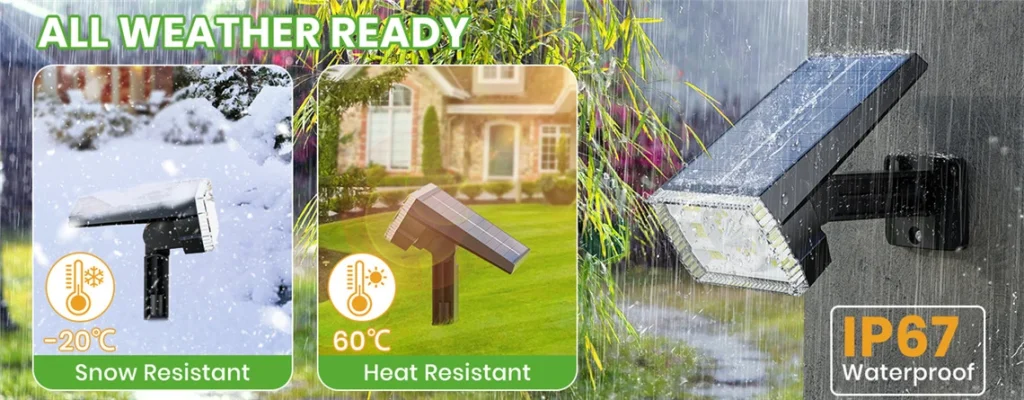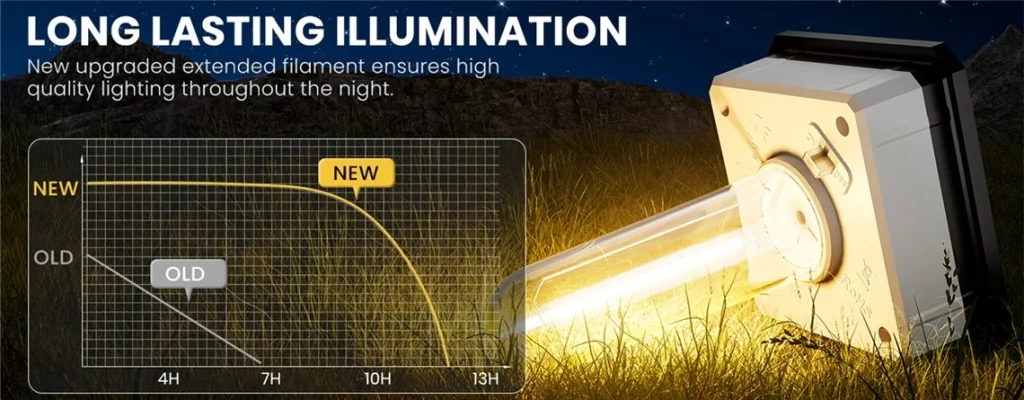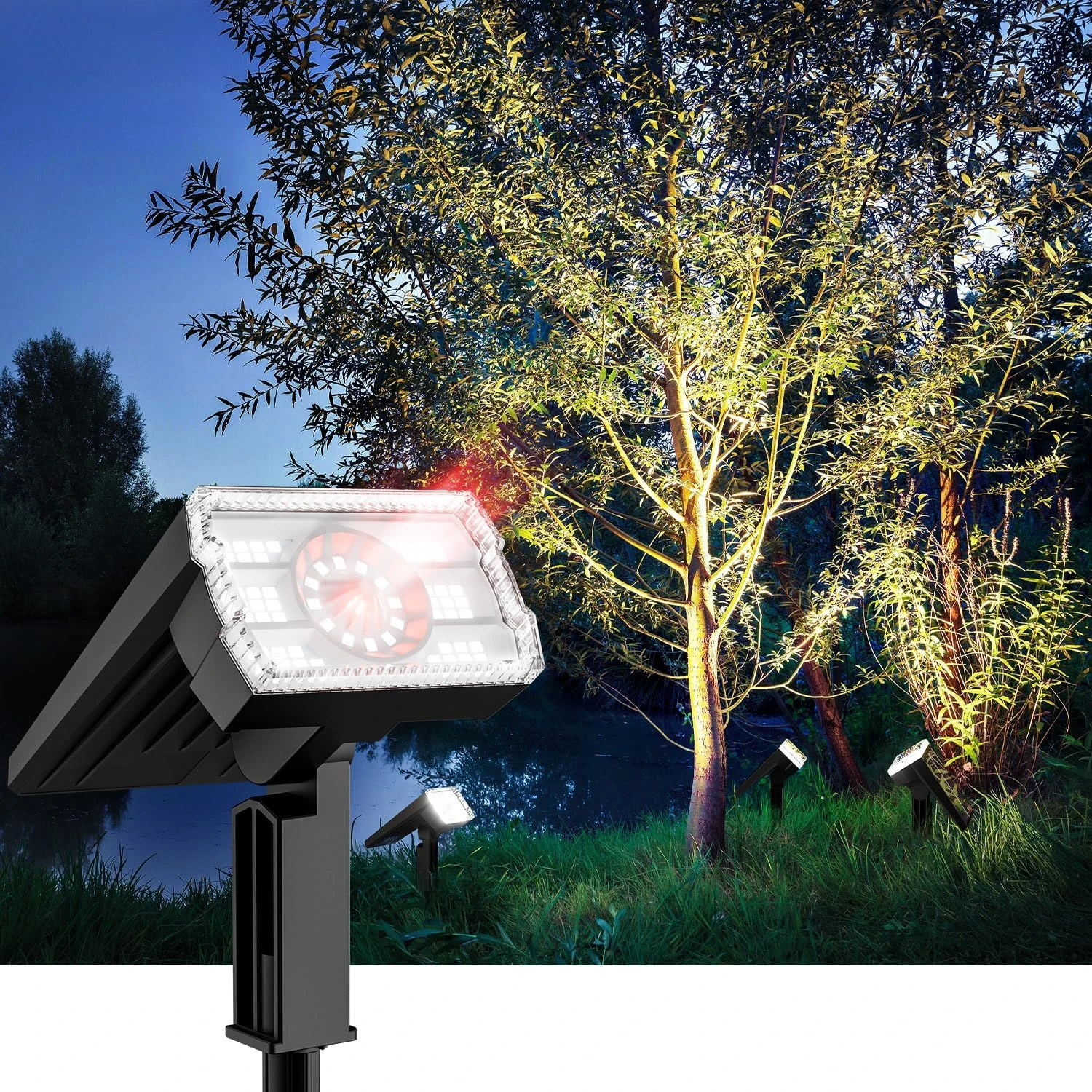Solar powered motion detector flood lights are a game-changer for American homeowners seeking energy-efficient, secure, and versatile outdoor lighting solutions. Combining solar power, motion detection, and light-sensing technology, these flood lights provide powerful illumination exactly when and where it’s needed. From enhancing security in a suburban Atlanta driveway to lighting up a rural Montana barn, solar motion detector flood lights offer a sustainable way to brighten outdoor spaces. This comprehensive guide explores their core value, selection criteria, installation tips, maintenance advice, scenario adaptations, and practical techniques for optimizing performance in U.S. homes.

Core Value of Solar Motion Detector Flood Lights
Synergy of Solar Power, Motion Detection, and Light Sensing
Solar motion detector flood lights stand out due to their integrated technologies: solar power for energy efficiency, motion detection for responsive lighting, and light sensing for automatic operation. The solar component harnesses sunlight to power the lights, eliminating electricity costs and reducing environmental impact. In sunny regions like Arizona, a full day’s charge can provide 8–12 hours of reliable illumination, while advanced panels ensure functionality even in cloudier areas like Oregon.
Motion detection adds a layer of security and efficiency, activating the lights only when movement is detected. This is ideal for deterring intruders in urban settings like Chicago or illuminating pathways in rural Colorado. The light-sensing feature ensures the flood lights operate only in low-light conditions, conserving energy during the day. Together, these features create a seamless, eco-friendly lighting solution that enhances safety and convenience for homeowners across the U.S.
The synergy of these technologies makes solar motion detector flood lights versatile for various applications, from lighting a Texas garage to securing a Maine coastal property. Their ability to operate independently of electrical grids also makes them a practical choice for remote or off-grid locations, such as cabins in the Smoky Mountains.
Key Selection Criteria for Solar Motion Detector Flood Lights
LUX Parameters and Light-Sensing Sensitivity
When choosing solar motion detector flood lights, understanding LUX (a measure of ambient light) and light-sensing sensitivity is critical. LUX ratings determine when the lights activate based on surrounding light levels. For example:
- Low LUX (5–20 LUX): Ideal for areas with early twilight or heavy shade, such as wooded backyards in Washington, where lights need to activate sooner.
- Medium LUX (20–50 LUX): Suitable for suburban settings like those in Raleigh, North Carolina, where lights activate at dusk.
- High LUX (50+ LUX): Best for bright environments like Florida patios, where lights should only activate in near-darkness.
Motion detection sensitivity is equally important. Look for adjustable settings to customize the detection range (typically 10–30 feet) and sensitivity to avoid false triggers from small animals or passing cars, a common concern in busy neighborhoods like those in Los Angeles. High-lumen output (500–2000 lumens) ensures bright illumination for security purposes, while IP65 or higher waterproof ratings guarantee durability in varied climates, from humid Miami to snowy Minnesota.
Installation Tips for Solar Motion Detector Flood Lights
Optimizing Placement for Light-Sensing Accuracy
Proper installation of solar motion detector flood lights is essential for maximizing their performance. The solar panel must receive 6–8 hours of direct sunlight daily to ensure adequate charging. In northern states like Michigan, position panels southward to capture maximum sunlight, avoiding obstructions like trees or overhangs. For urban homes in New York, mount lights high on walls or garages to avoid shadows from nearby structures.
The light sensor’s placement also affects accuracy. Ensure it’s not exposed to artificial light sources, such as streetlights in suburban Ohio, which can prevent the flood light from activating. Test the sensor after installation by covering it to simulate darkness, ensuring it triggers correctly. Adjust the panel angle seasonally, especially in regions like Colorado with significant sun angle changes, to maintain optimal charging.
Mounting and Motion Detection Alignment
Secure mounting is crucial for stability, particularly in windy areas like Oklahoma. Use provided brackets and anchors suitable for your surface—brick, wood, or vinyl—common in homes from Georgia to California. For motion detection, align the sensor to cover the desired area, such as a driveway or backyard entrance. A 15–20-foot detection range is ideal for most residential settings, but adjust it lower in high-traffic areas like downtown Boston to avoid frequent triggers. Test the motion sensor by walking through the detection zone to confirm coverage and sensitivity.
Maintenance Techniques for Consistent Performance
Panel Cleaning for Optimal Charging
Regular cleaning of the solar panel ensures efficient energy capture, directly impacting the performance of solar motion detector flood lights. Dust, pollen, or bird droppings, common in areas like Arizona or Louisiana, can reduce charging efficiency. Wipe the panel monthly with a damp, non-abrasive cloth, avoiding harsh chemicals that could damage the surface. In coastal regions like Florida, check for salt buildup, which can corrode components over time.
Battery Health and Sensor Sensitivity
The rechargeable batteries (typically NiMH or lithium-ion) in solar motion detector flood lights last 1–3 years. If lights dim or fail to activate, replace the battery, available at retailers like Home Depot or Amazon. In cold climates like Montana, store lights indoors during extreme winter months to protect battery life. Regularly inspect sensor lenses for dirt or scratches, as these can reduce motion detection accuracy. A clean sensor ensures reliable performance, especially for security-focused installations in urban areas like Detroit.
Scenario Adaptations for Different Lighting Environments
Setting Light-Sensing Thresholds for Various Conditions
The performance of solar motion detector flood lights depends on tailoring light-sensing thresholds to specific environments:
- Urban Environments: In cities like Philadelphia, where streetlights or ambient city glow is common, set a higher LUX threshold (50+ LUX) to prevent lights from activating unnecessarily during twilight. This ensures energy conservation and focuses illumination on true darkness.
- Suburban Settings: For neighborhoods in Charlotte, North Carolina, a medium LUX setting (20–50 LUX) balances early evening activation with energy efficiency, ideal for driveways or front yards.
- Rural or Shaded Areas: In rural Maine or heavily wooded Tennessee properties, use a low LUX setting (5–20 LUX) to trigger lights earlier in shaded or low-light conditions, ensuring consistent illumination for safety.
- Bright, Sunny Regions: In places like Nevada, where sunlight is intense, a higher LUX threshold prevents lights from activating until full darkness, maximizing battery life for overnight security.
Adjustable LUX settings allow customization, ensuring the lights suit your specific location and lighting needs.

Practical Techniques for Optimization
Adjusting Light-Sensing and Motion Detection Settings
Fine-tuning solar motion detector flood lights enhances their efficiency and effectiveness. Follow these steps to adjust settings:
- Light-Sensing Calibration: Most models have a LUX adjustment knob or digital interface. Test the light sensor at dusk to find the optimal threshold for your environment. For example, in Seattle’s cloudy climate, a lower LUX setting ensures earlier activation.
- Motion Detection Range: Adjust the sensor’s range to cover key areas, such as a Texas driveway or a Virginia porch. A 15-foot range is typically sufficient for residential use, but extend it for larger properties. Reduce sensitivity in windy areas like Kansas to avoid false triggers from moving branches.
- Timing Settings: Set the duration of illumination (e.g., 10–60 seconds) after motion is detected. Shorter durations conserve energy in high-traffic areas like Miami, while longer durations suit isolated areas like Idaho farms.
- Test and Refine: Walk through the detection zone at night to verify coverage and adjust angles if needed. Ensure the light sensor isn’t blocked by debris or misaligned toward artificial light sources.
Combining these adjustments ensures the lights activate precisely when needed, enhancing both security and energy efficiency.
Coordinating Motion Detection with Light Output
To maximize the impact of solar motion detector flood lights, coordinate motion detection with light output. For security-focused areas like a Chicago garage, pair high-lumen output (1000+ lumens) with a wide detection range to deter intruders. For aesthetic purposes, such as a California patio, use lower lumens (200–500) with a narrower range for subtle illumination. Some models offer dual modes—bright for motion detection and dim for ambient lighting—ideal for versatile use in suburban New Jersey homes.
Conclusion
Solar motion detector flood lights offer American homeowners a powerful, eco-friendly solution for outdoor lighting and security. Their combination of solar power, motion detection, and light-sensing technology delivers reliable performance, from urban Chicago to rural Montana. By selecting lights with appropriate LUX and sensitivity settings, installing them strategically, and maintaining them properly, you can ensure long-lasting, efficient illumination. Whether securing a driveway, lighting a porch, or enhancing a backyard, these lights provide a sustainable and effective way to brighten and protect your home.


Leave a Reply